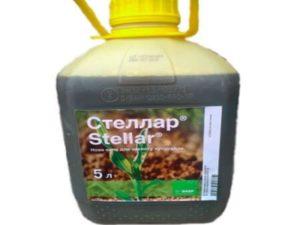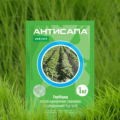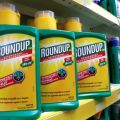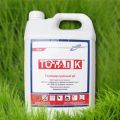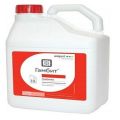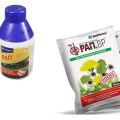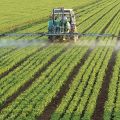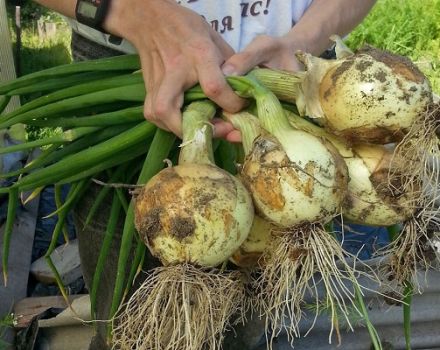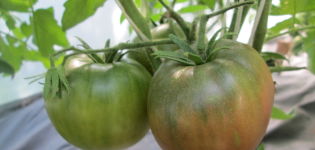Instructions for the use of herbicide Glyphosate
Non-selective herbicides are used to remove all types of vegetation. The leader among such agents is Glyphosate, a systemic contact herbicide that appeared in 1970 in the United States and became popular all over the world. He made it possible to abandon the regular removal of unnecessary plants by mechanical methods. After many years of use, the negative aspects of the drug's action became known, but this did not reduce the demand for the herbicide.
Content
- 1 Chemical characterization and purpose of Glyphosate
- 2 The principle of action of a continuous herbicide
- 3 What weeds does it help against?
- 4 Toxicity degree
- 5 Dosage calculation and consumption rate
- 6 Instructions for use
- 7 Protective period
- 8 Impact speed
- 9 Possibility of emergence of resistance
- 10 Safety engineering
- 11 Compatibility with other products
- 12 How to store it correctly
Chemical characterization and purpose of Glyphosate
The formula patented by Monsanto was the result of the work of biochemist D. Franz, who studied the effect of phosphorus-containing substances on plants and methods of weed control.
The resulting compound is N- (phosphonomethyl) -glycine, a glycine amino acid derivative. As a result, the drug has the following properties:
- herbicidal - destroys perennial, annual, cereal weeds, has a contact and systemic effect;
- arboricide - inhibits the growth and reproduction of woody plants (shrubs, trees);
- Desiccant - a pesticide used to dry (remove excess moisture from tissues) of cultivated cereals to facilitate harvesting.
Glyphosate is used to eliminate unwanted vegetation of any kind. It is used in harvested fields to lime the remains of cultivated plants and weeds, to remove rhizomes in the ground.

In the urban and road sector, the herbicide is used to clean house plots and yards, roadsides, the territory along main pipelines, railway lines.
Reference: Glyphosate is recommended for use in small areas - summer cottages, in subsidiary plots.
It is produced in canisters with a capacity of 1 to 20 liters with an active substance content of 36-45%. There is also a preparation in the form of crystals in soft plastic. Analogs are Glyphos, Fighter, Roundup, Typhoon.

The principle of action of a continuous herbicide
The drug belongs to contact, begins to act upon pollination and contact with the ground part of the plants. In the future, it demonstrates a systemic effect - it is distributed through the conducting channels to all tissues, including the root.
Under internal influence, the synthesis of amino acids is inhibited, the development of the plant slows down and stops, provoking its death. After washing off the Glyphosate particles into the soil by precipitation or watering by the root, it is not absorbed.
The substance is white crystals. To facilitate dissolution in water, glyphosate is used in the form of a salt, more often isopropylamine.
The obvious signs of herbicide exposure are yellowing of the leaves, which become soft, lethargic, and without turgor. The plant dries up, shrivels, dies.
Of the trees, only conifers show resistance to the action of the herbicide. Glyphosate destroys weeds and cultivated vegetation without choice, this is how its continuous effect is manifested.

What weeds does it help against?
The action of Glyphosate extends to weeds, annual and perennial - with powerful rhizomes and stems. It removes weeds that grow along the irrigation canals - reeds, feed.
The effect of the herbicide is strong on the following types of vegetation:
- oregano;
- clover;
- bluegrass;
- creeping wheatgrass;
- foxtail;
- nettle;
- timothy grass;
- mouse peas.

The herbicide has a moderate effect on the following types of weeds:
- buttercup;
- sagebrush;
- St. John's wort;
- cane;
- burdock;
- hogweed;
- thymus;
- broadleaf cattail.
With the help of Glyphosate, poplar, linden, alder, birch can be removed from the territory.

Toxicity degree
The drug belongs to the 3rd group of hazardous substances, it is not considered highly toxic to humans and animals. The negative effect of the herbicide on soil humus and some (insufficiently confirmed) connection with the development of skin cancer have been established.
Dosage calculation and consumption rate
The dosage of the herbicide is chosen according to the type of weed vegetation, the density of contamination and the timing of development. Approximate norms for different types of crops:
| Culture | Glyphosate volume in liters per hectare | Timing |
| Vineyards, gardens
| 2-4 annual weeds 4-8 perennial | Spring-early summer with the protection of cultural plantings |
| Potatoes | 2-3 | Before germination |
| Fields for cereals, vegetables, oilseeds, melons
Couples | 2-4 annual weeds 4-8 perennial 6-8 hard-core perennials | After harvest, 2-4 weeks before sowing
During active weed growth |
| Grain desiccation | 2-3 | 14 days before cleaning |
When spraying from the ground, the consumption is 100-200 liters of the finished mixture per hectare, with aerial processing - 50-100 liters per hectare.
Instructions for use
It is allowed to treat the fields with herbicide with ground sprayers and with the help of agricultural aviation.
Most crops require a one-time weed control. It is performed when there is no threat of precipitation, morning dew, and the air temperature does not drop below 15 °. Application methods:
- fields - in pairs or stubble (you can sow in 2-4 weeks);
- for tree species - in cuts on the trunk, by spraying foliage;
- orchards - directional spraying of weeds.
Preparative forms are diluted according to the instructions with water, based on the standards for this type of vegetation.
Protective period
The herbicide does not allow perennial rhizomes to recover during the entire growing season, at high rates of spraying, it completely destroys. Annual herbs die from Glyphosate, but the drug does not affect the seeds. The young generation of weeds can emerge from seed.

Impact speed
Vegetation treated with Glyphosate dies within a month. Stopping vegetation and signs of damage on annual weeds appear after 2-4 days, on perennials - after 7-10 days.
Increased humidity of air, soil and low temperature reduce the activity of the herbicide.
Possibility of emergence of resistance
The facts of the emergence of resistance to Glyphosate in protected crops have been recorded. This allowed the creation of herbicide-resistant soybean varieties. On the basis of the protein found in soybeans, varieties of other crops - sunflower, potato - have been developed, which have become transgenic.
Weeds do not develop resistance.

Safety engineering
When preparing the solution and spraying the herbicide, it is necessary to follow the usual rules for working with agrochemistry:
- prepare a solution at special stages;
- wear protective equipment - glasses, suit, boots;
- exclude contact of the mixture with children, animals, products.
If symptoms of poisoning appear, rinse the stomach, drink sorbents. In case of contact with skin, wash thoroughly.
Compatibility with other products
The drug can be used in combination with the following agents:
- dicamba;
- atrazine;
- 2,4-D.
There is experience of using Glyphosate with other herbicides (Metribuzin, Simazin).

How to store it correctly
The herbicide remains active in an unopened package for 5 years. Storage - in utility rooms and in special warehouses at temperatures from -1 ° to +35 °.
Non-selective herbicides eliminate the tedious methods of removing weeds by hand or power weeding. It is important to use glyphosate correctly, do not exceed dosages, and use it within the recommended time frame. Then the negative impact of the herbicide on weed control will be reduced to a minimum.
